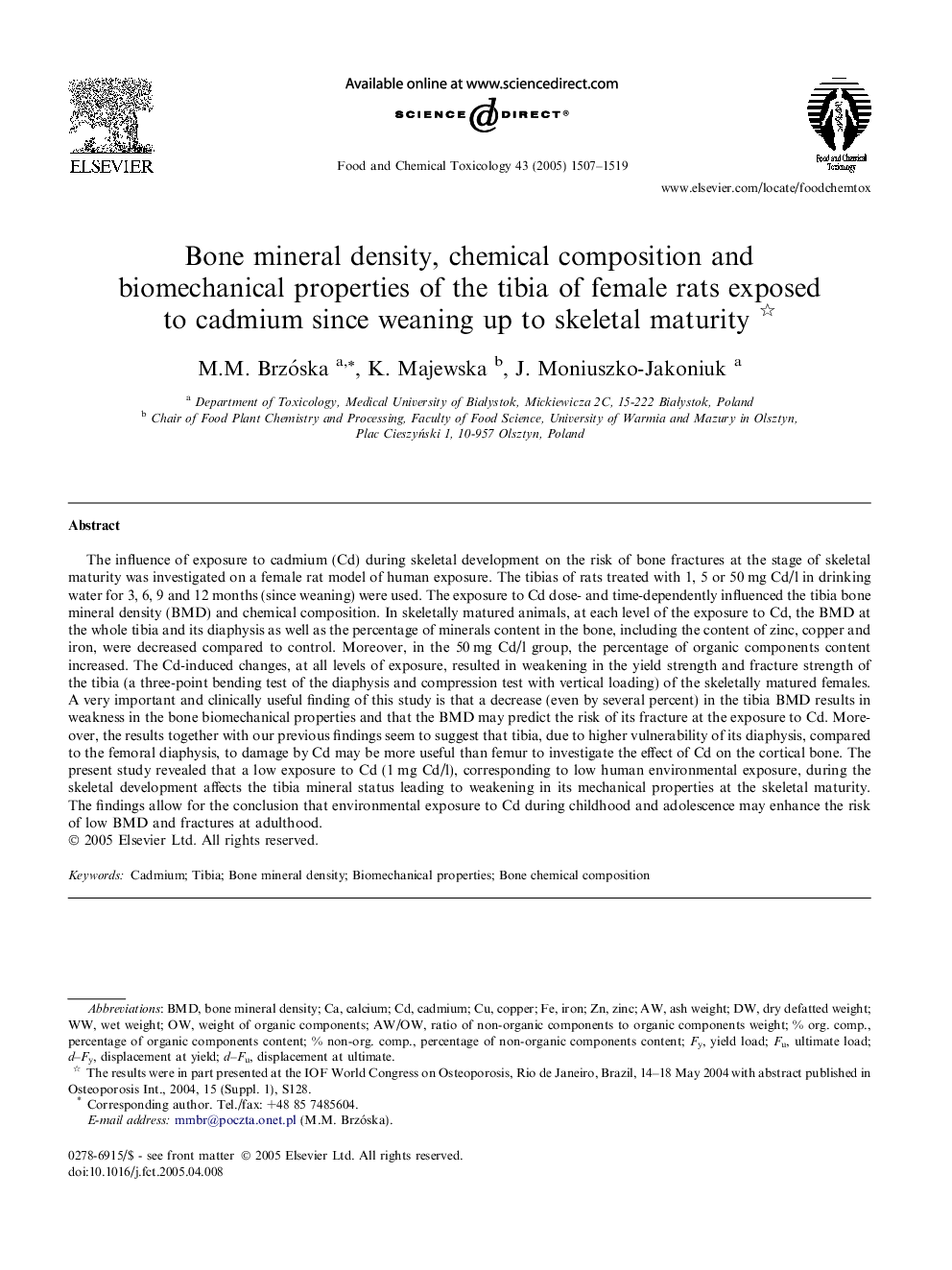| کد مقاله | کد نشریه | سال انتشار | مقاله انگلیسی | نسخه تمام متن |
|---|---|---|---|---|
| 9030631 | 1130930 | 2005 | 13 صفحه PDF | دانلود رایگان |
عنوان انگلیسی مقاله ISI
Bone mineral density, chemical composition and biomechanical properties of the tibia of female rats exposed to cadmium since weaning up to skeletal maturity
دانلود مقاله + سفارش ترجمه
دانلود مقاله ISI انگلیسی
رایگان برای ایرانیان
کلمات کلیدی
موضوعات مرتبط
علوم زیستی و بیوفناوری
علوم کشاورزی و بیولوژیک
دانش تغذیه
پیش نمایش صفحه اول مقاله

چکیده انگلیسی
The influence of exposure to cadmium (Cd) during skeletal development on the risk of bone fractures at the stage of skeletal maturity was investigated on a female rat model of human exposure. The tibias of rats treated with 1, 5 or 50Â mg Cd/l in drinking water for 3, 6, 9 and 12 months (since weaning) were used. The exposure to Cd dose- and time-dependently influenced the tibia bone mineral density (BMD) and chemical composition. In skeletally matured animals, at each level of the exposure to Cd, the BMD at the whole tibia and its diaphysis as well as the percentage of minerals content in the bone, including the content of zinc, copper and iron, were decreased compared to control. Moreover, in the 50Â mg Cd/l group, the percentage of organic components content increased. The Cd-induced changes, at all levels of exposure, resulted in weakening in the yield strength and fracture strength of the tibia (a three-point bending test of the diaphysis and compression test with vertical loading) of the skeletally matured females. A very important and clinically useful finding of this study is that a decrease (even by several percent) in the tibia BMD results in weakness in the bone biomechanical properties and that the BMD may predict the risk of its fracture at the exposure to Cd. Moreover, the results together with our previous findings seem to suggest that tibia, due to higher vulnerability of its diaphysis, compared to the femoral diaphysis, to damage by Cd may be more useful than femur to investigate the effect of Cd on the cortical bone. The present study revealed that a low exposure to Cd (1Â mg Cd/l), corresponding to low human environmental exposure, during the skeletal development affects the tibia mineral status leading to weakening in its mechanical properties at the skeletal maturity. The findings allow for the conclusion that environmental exposure to Cd during childhood and adolescence may enhance the risk of low BMD and fractures at adulthood.
ناشر
Database: Elsevier - ScienceDirect (ساینس دایرکت)
Journal: Food and Chemical Toxicology - Volume 43, Issue 10, October 2005, Pages 1507-1519
Journal: Food and Chemical Toxicology - Volume 43, Issue 10, October 2005, Pages 1507-1519
نویسندگان
M.M. Brzóska, K. Majewska, J. Moniuszko-Jakoniuk,